EHS Journal of Environmental Health Columns for 2016
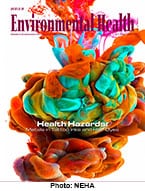
Parks: An Opportunity to Leverage Environmental Health [PDF – 346 KB] – Public health and parks and recreation departments have many synergistic goals that could be leveraged to make both more effective. In this column, Dee Merriam shares resources and a series of questions environmental health staff can use to explore collaboration opportunities with their local parks and recreation programs. This article was published in the January/February 2016 issue [PDF – 126 KB] of the Journal of Environmental Health.
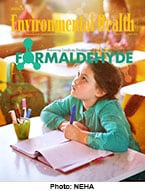
CDC’s Drought Guidance: Your Public Health Resource for Understanding and Preparing for Drought in Your Community [PDF – 208 KB] – Are drought issues affecting your community, or could they affect your community in the future? In this column, Martin Kalis and Elaine Curtiss discuss how CDC’s drought guidance, When Every Drop Counts, can help you understand how drought may impact public health in your community and how to prepare for it. This article was published in the March 2016 issue [PDF – 172 KB] of the Journal of Environmental Health.
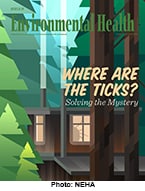
New Emergency Response Training for Environmental Health Professionals [PDF – 236 KB] – Environmental health practitioners perform many critical functions during emergency response and recovery. In this column, CDC’s Martin Kalis and FEMA’s Bernice Zaidel discuss the new Environmental Health Training in Emergency Response (EHTER) Operations-level course, including what students will learn, and what past students thought. This article was published in the April 2016 issue [PDF – 167 KB] of the Journal of Environmental Health.
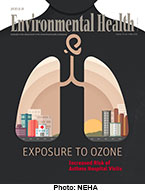
Update from the Council for the Model Aquatic Health Code (and Why You Should Join) [PDF – 215 KB] – The Council for the Model Aquatic Health Code (CMAHC) is comprises members from public health and the aquatics industry who are committed to keeping the MAHC current, sustainable, and easily understood and implemented. In this column, guest author and CMAHC President Doug Sackett discusses the 1st Biennial CMAHC Conference and the future of the MAHC. This article was published in the May 2016 issue [PDF – 167 KB] of the Journal of Environmental Health.
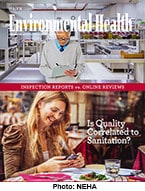
Vector Control Tools and Resources for Environmental Health Professionals [PDF – 373 KB] – Environmental health professionals are on the frontline of helping individuals, institutions, and communities reduce threats from mosquitoes, ticks, and other vectors. In this column, author Kelli Foster discusses training and other resources designed to advance environmental health professionals’ awareness of public health threats posed by vectors and pests. This article was published in the June 2016 issue [PDF – 101 KB] of the Journal of Environmental Health.
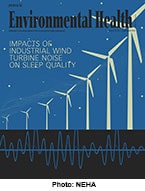
Preventing Legionnaires’ Disease: Environmental Health Expertise Is Key [PDF – 472 KB] – Legionnaires’ disease is caused by inhaling aerosolized water droplets containing Legionella bacteria, most often found in human-made water systems and cooling towers. In this column, CDC’s Jasen Kunz and Laura Cooley discuss the vital role environmental health plays in preventing this disease and responding to outbreaks. This article was published in the July/August 2016 issue [PDF – 252 KB] of the Journal of Environmental Health.
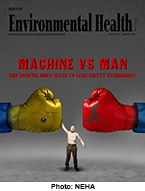
Improving Food Safety Through Prevention: CDC’s Food Safety Prevention Status Report [PDF – 388 KB] – Because September is National Food Safety Education Month, we are highlighting the food safety Prevention Status Reports (PSRs). In this column, CDC’s Lauren Lipcsei and Anita Kambhampati discuss how the food safety PSR measures the status of select practices and policies that can help states prevent or reduce foodborne illness risk. This article was published in the September 2016 issue [PDF – 177 KB] of the Journal of Environmental Health.
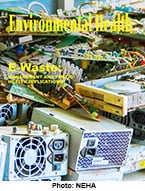
Updated Drinking Water Advisory Communication Toolkit [PDF – 410 KB] – In recent years, several high-profile water contamination events have become a reminder of the need for continual preparedness for water-related emergencies and outbreaks. In this column, CDC’s Rob Blake, Jonathan Yoder and Baylor University student John Kou discuss updates to CDC’s Drinking Water Advisory and Communication Toolkit, designed to help local water utilities, health departments, and community emergency managers create accurate and timely public messaging about these drinking water emergencies. This article was published in the October 2016 issue [PDF – 195 KB] of the Journal of Environmental Health.
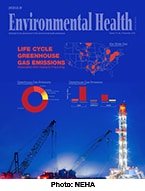
Environmental Health Resources by Essential Services [PDF – 206 KB] – CDC provides tools and guidance, training, and research for practitioners and programs delivering environmental health services in states, tribes, localities, and territories. In this column, Elaine Curtiss outlines resources organized by the 10 Essential Environmental Public Health Services that can help your program fill performance gaps and contribute to larger performance improvement efforts such as voluntary public health department accreditation. This article was published in the November 2016 issue [PDF – 177 KB] of the Journal of Environmental Health.
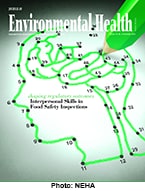
Innovative Vector and Pest E-Learning for Environmental Health Professionals [PDF – 548 KB] – Environmental health professionals live in a constantly changing world, and professional development opportunities are critical to maintaining and advancing this important workforce. In this column, CDC’s Martin Kalis and external partners discuss the new e-Learning series Vector Control for Environmental Health Professionals that provides new, accessible learning opportunities in vector control and pest management for environmental health professionals. This article was published in the December 2016 issue [PDF – 185 KB] of the Journal of Environmental Health.